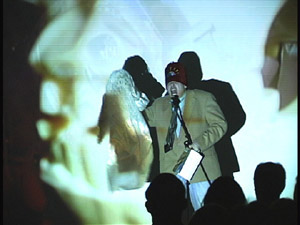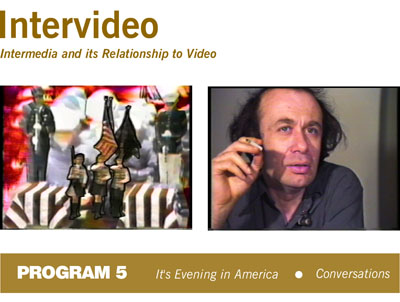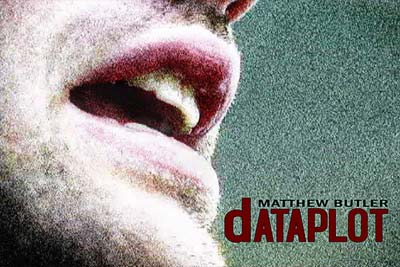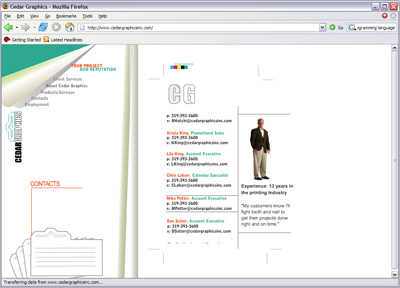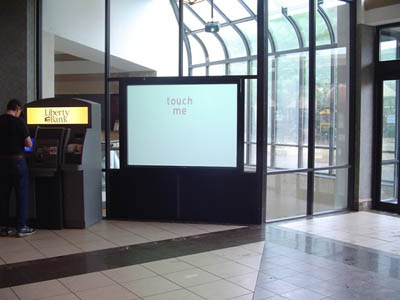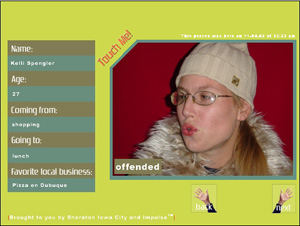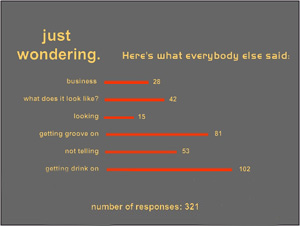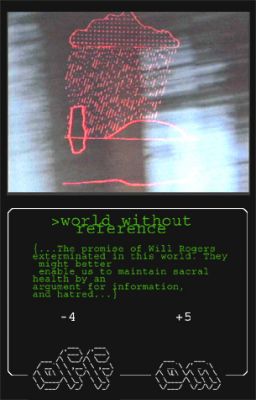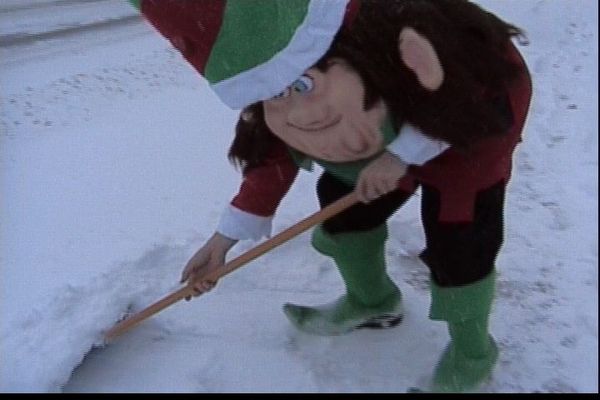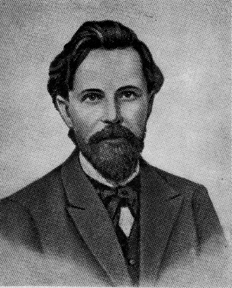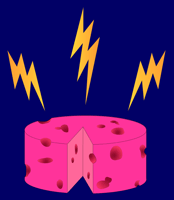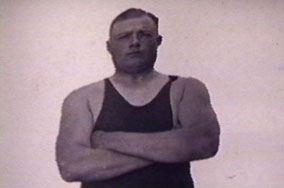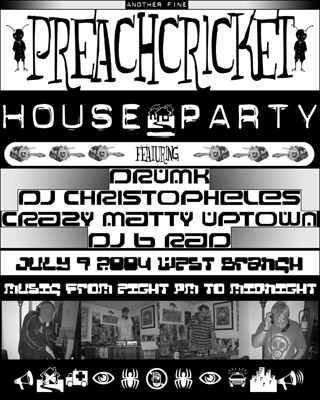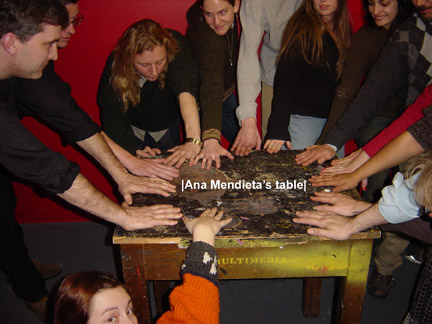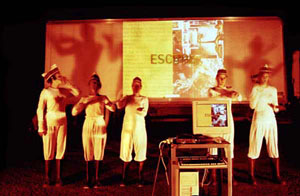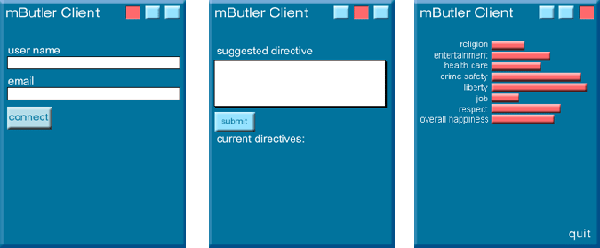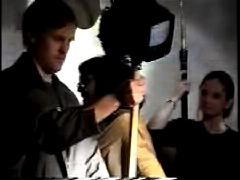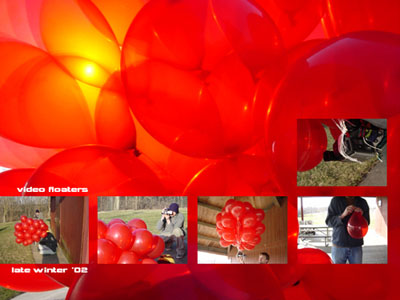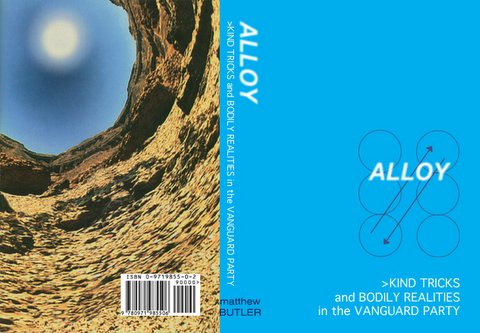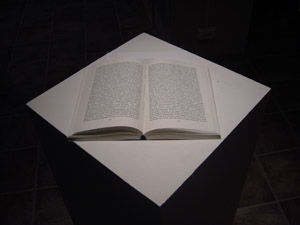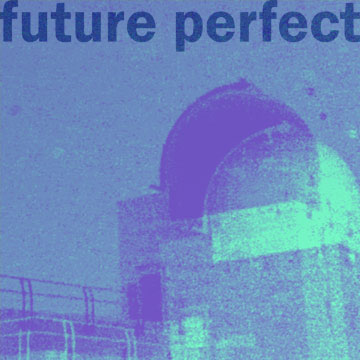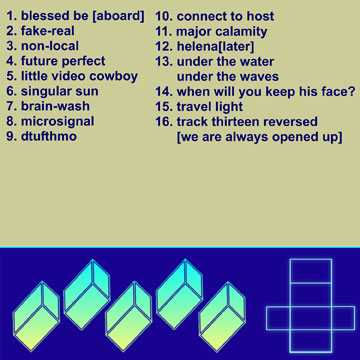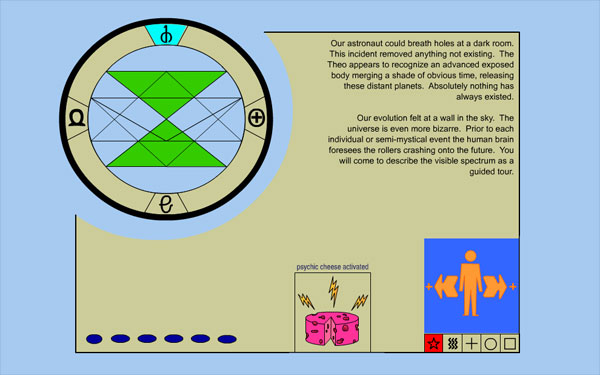Crypto-Adaptation
April 9th, 2004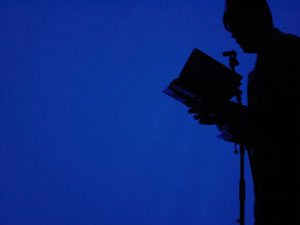
Originally produced in May 2003 for Spatial Intersections at the University of Iowa Museum of Art
seminar version performed for Version>04 Invisible Networks
based on the book ALLOY
Watch the Quicktime version
Dully Servant (Soviet No-Gang Shriners) reads from the twisted linguistic cosmology of >KIND TRICKS as [tele-psychic puppet] action-script for Skeleton Bride (People’s Republic of Delicious Foods). An advanced study for buried meta-conspiracies and progressive states of bibliomantic techgnosis.
crypto-adaptation:
1. secret self-modification by an agent in response to that agent’s changing systemic conditions
2. temporary micro-alterations in belief structure to accomplish a site-specific task
3. cross talk between versions
4. ritual narrative constructed to help explain random phenomena
5. orchestrated prescience
6. a hermetic sales pitch from beyond
A) Receiving predictive information concerning one’s environment has been the greedy desire of humankind since the construction of language as a tool thousands of years ago. If only we could describe what is just over the horizon! What an edge we’d have over our “competition” if we already had the specialized language to discuss the newness of tomorrow today.
B) As we continuously enter the new newness of so-called ‘new media’ and ‘new age’, our natural language is intermingling with programming language in shocking and considerable ways. Meaning is constructed out of clearly defined protocols that either “work” or “do not work” — there is no third position here. For the first time in existence, Poem and Code are the same. Though this ‘new language’ is less susceptible to the confusing ambiguities of old (i.e. we cannot use variables and handlers without clearly declaring their value and defining their procedure) there is still a magic in language which contributes to human evolution.
C) Language in some way creates the very reality in which we live. Words and concepts point to realities beyond the sensory world and assist us in making contact with a dimension that is higher, lower and parallel.
D) The great DADA experiment of cut-up writing carried out by Tzara, Burroughs, Gysin and others has now reached epic proportions. The intent was to jitter thought process with randomness in language. That jitter is now quake-like in magnitude thanks to advances in programmable electronics and automatic algorithms. What took them hours with newspapers and scissors now takes us seconds with computers — I can do 4 million words over brunch. We are no longer creating experimental voices but communicating with beings from other worlds.
E) Intangible Ideas, in Plato’s conception — as supersensible realities beyond human thought — are captured in scripts, as prisoners in their cells, and released by the act of perusal, setting the prisoners free. These Ideas reside in the words and terms independent of the programs and books in which the words are encased. Yet how and where, in the interval between their setting down and their taking up, do they abide? By what secret tract is their existence in the mind of the author/programmer connected with their resuscitation in the mind of the reader/user? Why at the sight of certain lines and figures on the voiceless page/screen do these particular thoughts spring up into renewed activity? What is the indiscoverable nexus between the physical vibrations of light and these immaterial substances of our noetic life?
F) Homo Sapiens unlocked the mystery power of their brains through the invention of language thousands of years ago. Language allowed them to reflect in a self-aware manner, invent finely crafted tools, and create handmade ornaments, shelter, and paintings. This epoch process is culminating in programmable electronics. We are becoming aware, again since before language, that the fracture between “subject” and “object” is unreal. What is more necessary… the operating language of a word processor or the inputted creative language of its user?
Akoll Tapoze Yitsoung!
